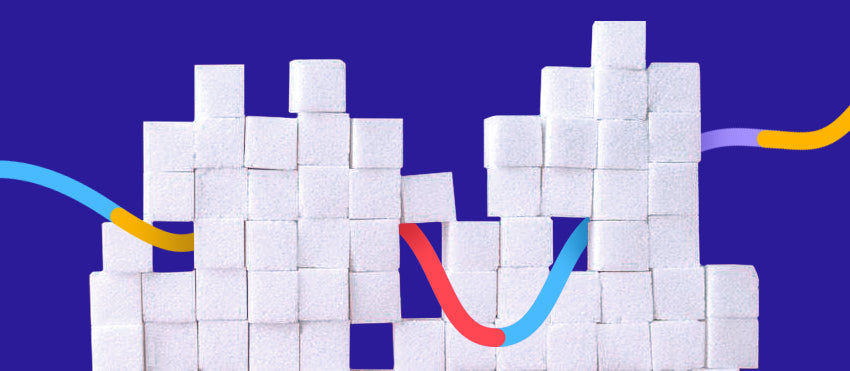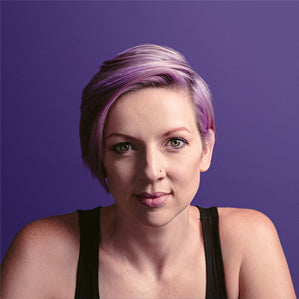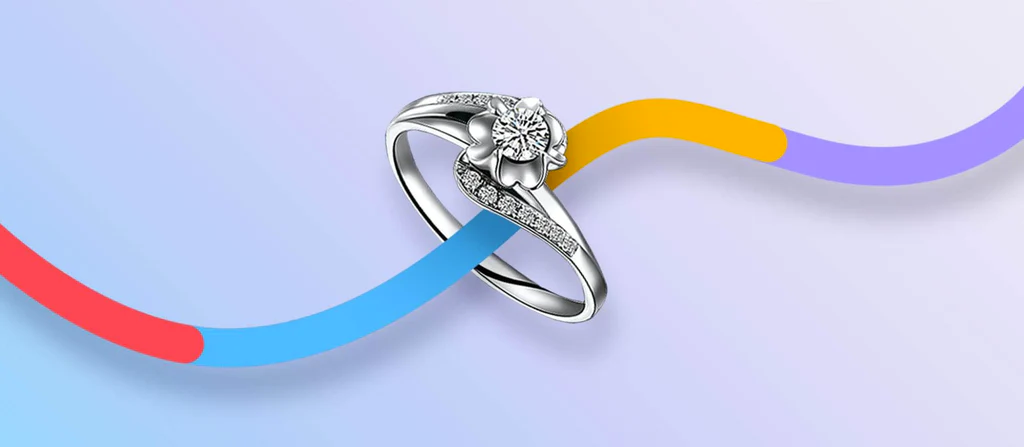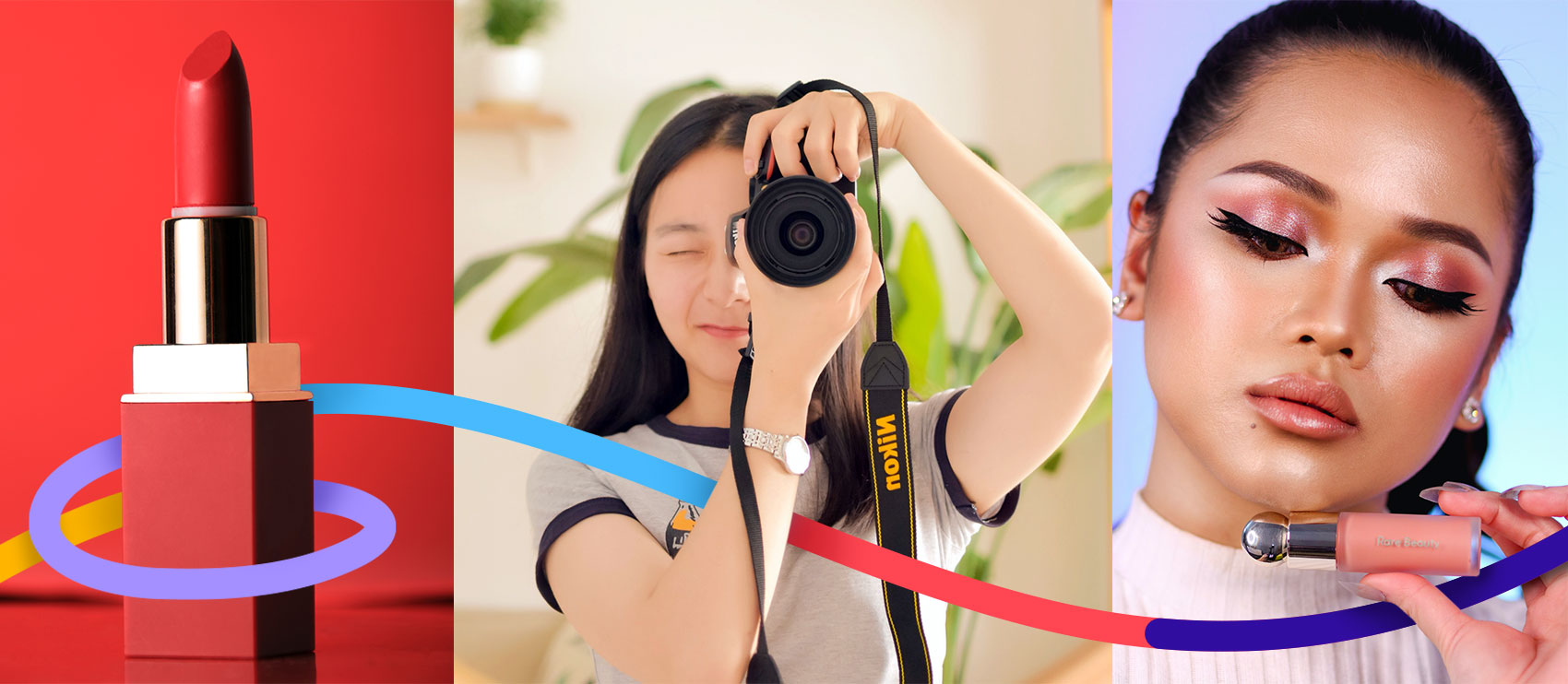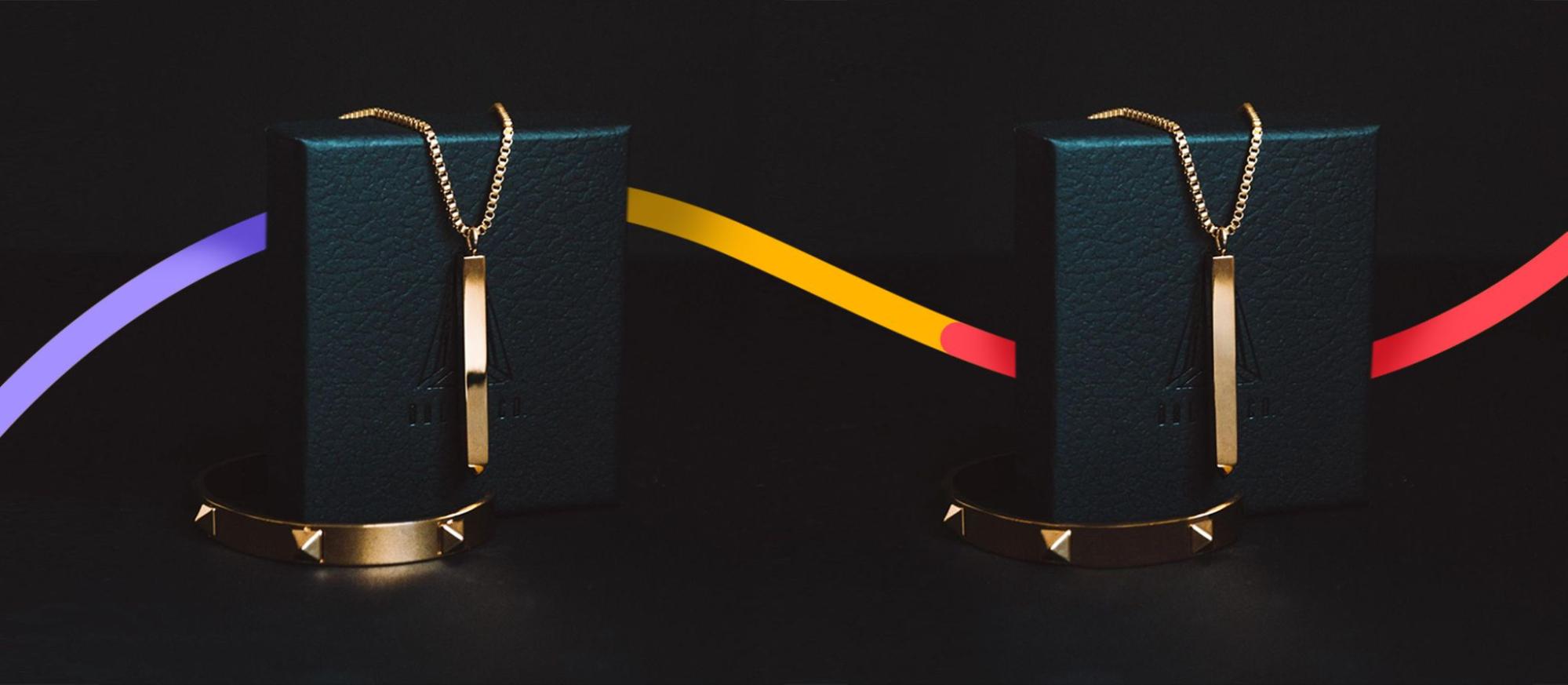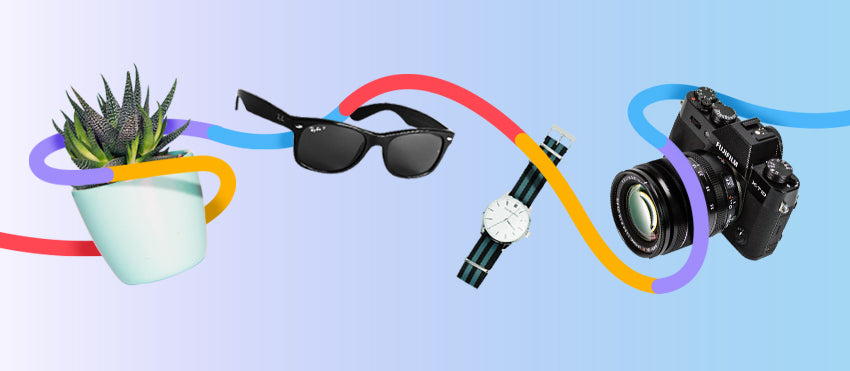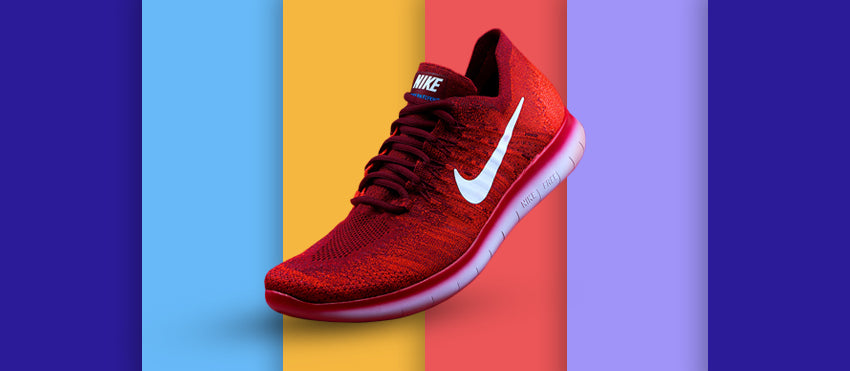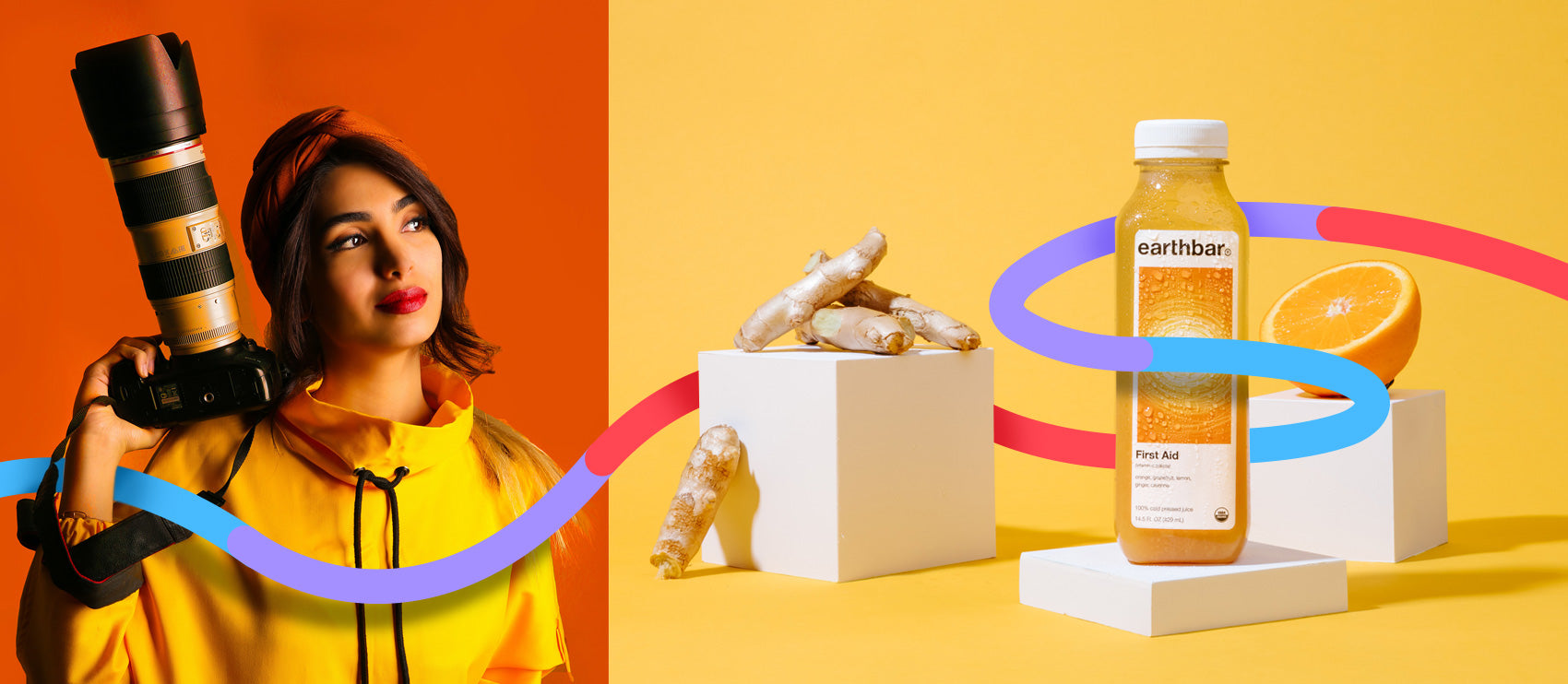Product photography can get stale if white background shots are your main focus. But incorporating a few props can mix up your images, adding dimension and visual interest to an otherwise flat frame. Photography boxes are the perfect props to highlight your products and add depth to your shot.
Curious about how to use product photography blocks to improve your images? Here are a few ideas to help you find and use boxes for product photography.
Why use product photography blocks
Boxes, cubes, and blocks—which we’ll refer to interchangeably—provide dimension and interest to an otherwise flat shot. While some products have enough visual appeal (e.g., the texture and height of the cat tree below) to stand out on their own, most items look better with a bit more attention.

Incorporating boxes emphasizes branding and adds new lines, lighting possibilities, stability, and height variation — enough flair to capture people’s attention but not enough to distract from the product. The watch image below, for instance, uses packaging as a block to add support, color, dimension, and branding.

How to prop up products for photography with cubes and blocks
Your options for propping up products for photography are pretty much endless, but don’t let that intimidate you. There are a few tried-and-true methods you can start with, and in time, using photography blocks will become second nature. Here are a few techniques to try:
Stack ’em
Stacking multiple boxes adds height and dimension to smaller products. And stacked blocks provide an eye-catching structure you can lean your product against if you’re working with something that’s tall or unbalanced. The image below features a makeup brush propped up against three stacked boxes — the top one carefully placed at a playful angle to show its relationship to the weight of the brush.

For larger products, you can also try using stairs for a similar effect. They allow you to play with height, arrangement and lighting — without having to lug around huge boxes. The wooden stairs in the example below are the perfect backdrop for houseplant product photos.

Use a single box
Simplicity screams luxury, and the use of a single box fits the mold. Placing your product in or on a single box gives the product a chic, desirable aesthetic. And when people look at the product in the photo, that's definitely a feeling you want them to have.
Skincare brand cocokind takes a simple approach with a single block propping up a bottle of their product.

Arrange a multitude of blocks
Using more than one cube makes it easier to incorporate a few products in one shot while maintaining a balanced composition. This approach works well for products that come in several similar varieties and for stores that sell one type of product (e.g., jewelry or perfume).
In the below example of jewelry product photography, the seller uses a couple of boxes to showcase three different rings, along with carefully placed drop shadow.

The example below also showcases a collection of products, this time featuring fragrances.

Not happy with the shadows in your shot? You can learn how to add a natural shadow in Photoshop to fix them in post-processing.
Go monochromatic
If you need a product image that portrays simplicity and harmony, it’s hard to go wrong with mixing different shades of the same basic color. Plus, monochromatic color schemes are ultra-modern and on-trend.
Whether the theme matches or contrasts the product depends on the item you’re photographing. A calming CBD lotion, for example, would most likely be better suited to colors that are complementary to the product’s packaging.

Get playful with props
Quirky or unconventional products photograph well with blocks that are different shapes and colors. For the best results, use interesting shape groupings and colors that highlight the product.
Men’s skincare brand MANTL plays around with shapes as well. Because bottles of toiletries aren’t particularly visually appealing, they added props to give shoppers images that are more engaging.

Where to get boxes for photography props
Ready to add some blocks to your product photography studio? If you’re just starting your search or want some fresh props, we’ve curated a selection of photography boxes and blocks to make it easier for you.
Acrylic blocks
Acrylic blocks are usually transparent. You often see them for in-store retail displays. They have clean lines and lend structure without any distractions. Thus, acrylic blocks are great for elevating products and creating distortion.

Where to find acrylic boxes or blocks:
- If you’ve got Prime shipping, you can have your acrylic boxes in two days or less because Amazon has a huge variety of them.
- Looking for something more unique? Etsy has a number of options.
- Both The Container Store and Walmart have acrylic boxes available online and possibly in-store.
- If you want a size you can’t find in any of the above resources, check out retail display companies like American Retail Supply and Retail Resource.
Foam
Foam blocks for photography are another fun option. They’re easy to paint and provide gentle support for products. Plus, the unusual surface lends a unique texture to the image. You can get foam in blocks, pads, and other shapes.

Where to find foam blocks:
- You’ll find a large selection on Amazon, Target, and eBay.
- Craft stores like Michael’s and Hobby Lobby usually have foam blocks available in several shapes and sizes.
- Yoga blocks are another simple option, and they come in a plethora of colors.
Tip: If you’re planning on using styrofoam blocks and then painting them, keep in mind spray paint melts styrofoam. Instead, you can use a different kind of paint or change the color in post-production. (More on that later.)
Children’s building blocks
Kids’ toy blocks make super props. Because of the range of sizes and shapes, they work for all sorts of products — and if you paint them beforehand, no one will ever suspect that your great photo prop is actually a toy.
Where to get children’s blocks:
- Get yours here on Amazon or pop into a nearby Walmart or Target, or your favorite toy store.
- Browse garage sales and thrift stores in your area. Families with children who’ve outgrown building blocks may be looking for a new home for the toys.
- Facebook marketplace is another possibility. There could be a family nearby that’s ready to part with their child’s toys.
IKEA shelves
The word IKEA used to be synonymous with college dorm decor, but the minimal design aesthetic and affordable prices make it a great go-to for shelves, blocks, boxes, and more.
Check out your local IKEA (you can find locations here) and — word to the wise — grab a cart on the way in. You never know just what perfect product photo prop you’ll find next. You can also shop IKEA shelves online here. As a bonus, the market is full of customization options for IKEA furniture.

Concrete or bricks
Concrete is another on-trend material. It’s attractive and rough at the same time. Pair concrete blocks with products such as self-care items for a modern feel.
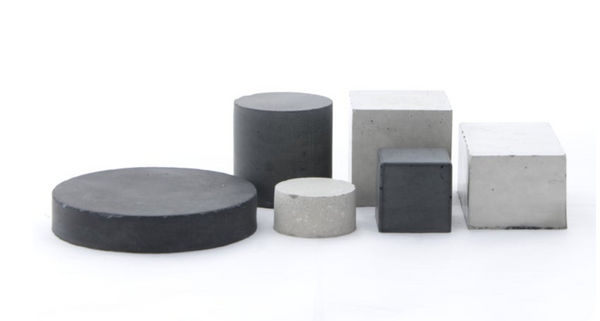
Where to get concrete or brick blocks:
- Most home improvement stores will have a large selection of concrete blocks.
- If you want a more refined concrete look, check out Etsy shops like this one.
- Look on social and networking sites to see if anyone in the neighborhood has bricks left over from a landscaping project.
Wood
Wood adds a natural look and feel to any product shot — and you can also use wood blocks as props. You can find wood props and boxes online, and you can also create your own if you have the material, knowledge, and tools.
Otherland, which sells candles, uses a variety of props to add dimension and visual elements to their images. In the image below, they have one of their candles on a wooden block, a perfect complement to the whimsical and nature-inspired look and feel of the overall shot and website.

You can also add a coat of paint to change up the look of your wood cubes. You can roll on paint, use a can of spray paint, or even add lacquer for a high gloss shine.
Where to find wood boxes:
- If you’re going to DIY, you’ll want to check out your local home improvement store. Can’t find the perfect paint or finish? Try your local craft store — their selection includes everything from matte to glossy, pearl to stone finish.
- If you’re specifically shooting for a farmhouse-chic vibe, apple boxes are an affordable option.
- Grocery stores, liquor stores, cheese shops, or other local businesses could also have boxes they’re no longer using. You may want to call ahead so you don’t inadvertently stop in at a busy time.
Product packaging
If the product comes in a pretty or interesting package, use it to your advantage by showcasing it in the product photos.
You don’t need fancy or artistic product packaging to use your product packaging as props. Acid League sells sauces and vinegars that come in clear glass containers, so you can see the product through the packaging. They use a bottle of seasoning to prop up a bottle of sauce in the example below.

Stone or crystal
Looking for something that’s natural and unique in texture and beauty? Pick up some stone squares or crystal cubes for a stunning product photo. Because stone and crystal come in so many varieties, you can pick one that lends neutral, masculine, or feminine qualities to your image.
Where to find stone and crystal blocks:
- Etsy has some really nice options for stone blocks.
- Because there are so many types of crystals, it may take some research to figure out what type you want and where to buy it. For example, you could get a dark and moody crystal, blocks that look like small cubes of gold, or something slightly transparent.
Post-shoot edits
Maybe you’re thinking back to a shoot you’ve already completed and wishing you could go back in time to add or recolor blocks. Editing can accomplish a number of those goals:
- Add geometric elements to your shots during post-processing.
- Change the color of the prop(s).
- Color balance the image.
With a larger investment, you can use an advanced program like Maya to virtually create blocks in your shot. (A tool like Maya is specifically for 3D rendering, 3D modeling, and simulation. Photoshop on the other hand is much more powerful for photo-editing and graphic design.)
Wellness brand De Lune has product images featuring cubes that look as though they could’ve been created virtually. The end result is clean and polished, and the color pops.

Don’t have time or the expertise to manage photo-editing? Consider outsourcing edits to your own virtual photo-editing studio. You’ll save time and end up with a more polished look.
Your own products
You might sell items that are cube- or rectangular-shaped themselves. In that case, you can use your own products as props as well.
Soap brand ORRIS PARIS has a fun and creative approach to their product imagery. They arrange the soaps in towers, propping one another up. Some soaps are in the box while others have been taken out, showing potential buyers both how they can expect to receive the product and what the product itself looks like.

Get creative with product photography props
Now that you have ideas on how to prop up products with cubes and boxes, what images will you create??
Although we separated out a few types of blocks to try, there’s no rule that says you can only use one type at a time. Perhaps one product pairs well with both wood and crystal. Or, you might want to use concrete blocks and product packaging in an image. Try different combinations, and let your creativity and unique perspective set you apart from other product photos.
Loving the blocks? Experiment with other props and explore new locations for product shoots.
Regardless of the route you take, you'll need some post-processing touch-ups. If you’ve already spent enough time perfecting the shot, outsource your basic edits to our team of trained professionals who can have your photos back in six hours or less.

